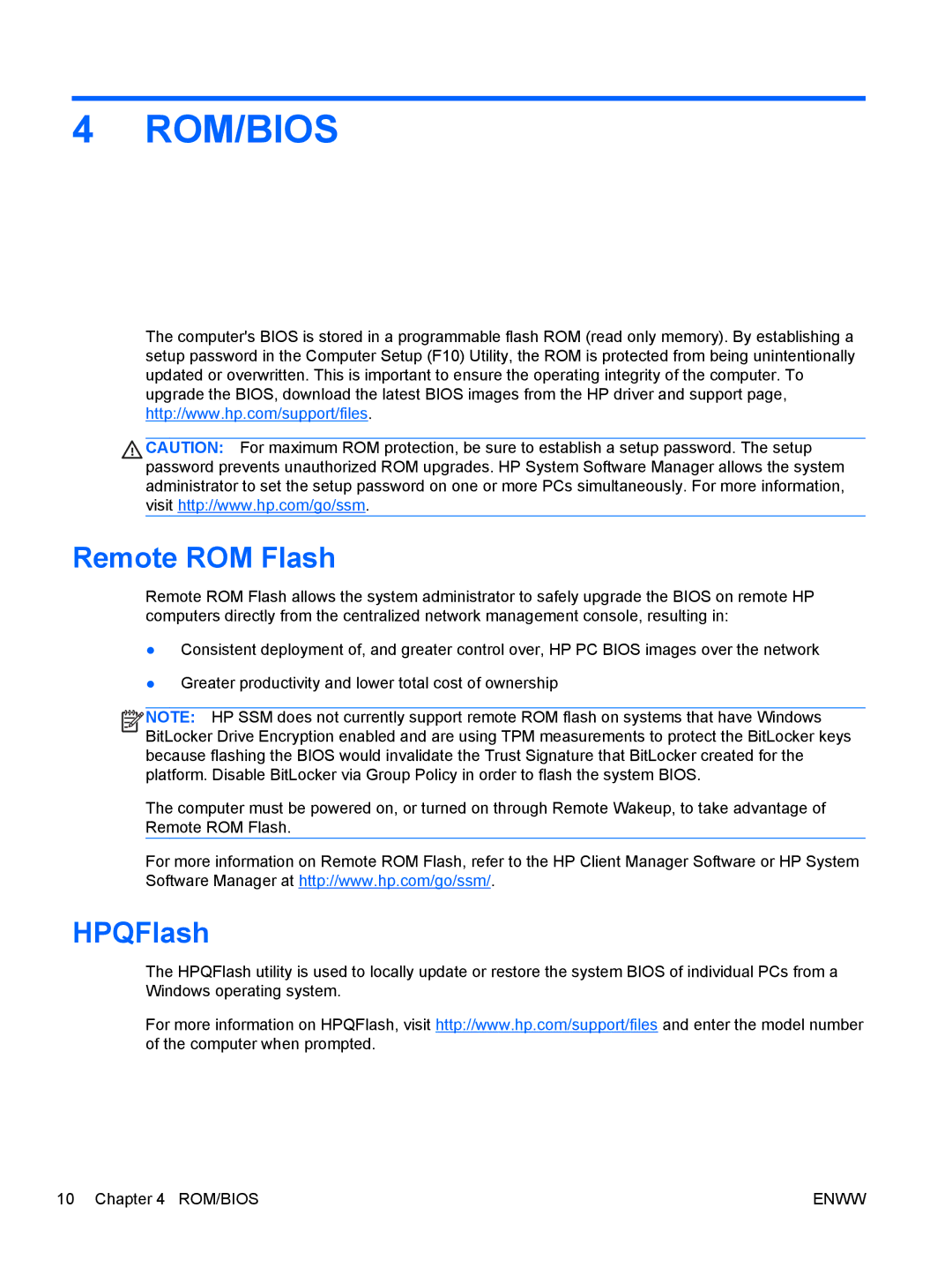
4 ROM/BIOS
The computer's BIOS is stored in a programmable flash ROM (read only memory). By establishing a setup password in the Computer Setup (F10) Utility, the ROM is protected from being unintentionally updated or overwritten. This is important to ensure the operating integrity of the computer. To upgrade the BIOS, download the latest BIOS images from the HP driver and support page, http://www.hp.com/support/files.
CAUTION: For maximum ROM protection, be sure to establish a setup password. The setup password prevents unauthorized ROM upgrades. HP System Software Manager allows the system administrator to set the setup password on one or more PCs simultaneously. For more information, visit http://www.hp.com/go/ssm.
Remote ROM Flash
Remote ROM Flash allows the system administrator to safely upgrade the BIOS on remote HP computers directly from the centralized network management console, resulting in:
●Consistent deployment of, and greater control over, HP PC BIOS images over the network
●Greater productivity and lower total cost of ownership
![]()
![]()
![]()
![]() NOTE: HP SSM does not currently support remote ROM flash on systems that have Windows BitLocker Drive Encryption enabled and are using TPM measurements to protect the BitLocker keys because flashing the BIOS would invalidate the Trust Signature that BitLocker created for the platform. Disable BitLocker via Group Policy in order to flash the system BIOS.
NOTE: HP SSM does not currently support remote ROM flash on systems that have Windows BitLocker Drive Encryption enabled and are using TPM measurements to protect the BitLocker keys because flashing the BIOS would invalidate the Trust Signature that BitLocker created for the platform. Disable BitLocker via Group Policy in order to flash the system BIOS.
The computer must be powered on, or turned on through Remote Wakeup, to take advantage of Remote ROM Flash.
For more information on Remote ROM Flash, refer to the HP Client Manager Software or HP System Software Manager at http://www.hp.com/go/ssm/.
HPQFlash
The HPQFlash utility is used to locally update or restore the system BIOS of individual PCs from a Windows operating system.
For more information on HPQFlash, visit http://www.hp.com/support/files and enter the model number of the computer when prompted.
10 Chapter 4 ROM/BIOS | ENWW |
